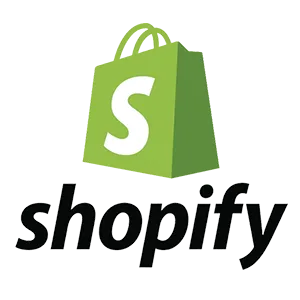
250 Marketing Terms: Definitions for Success - Suffari
Staying ahead of the curve can feel like a daunting task, especially with the constant influx of new technologies, strategies, and jargon. Whether you're a seasoned marketer or just starting out, understanding the language of digital marketing is crucial to navigating the landscape effectively and making informed decisions. That’s why we’ve curated "The Ultimate Glossary: 250 Essential Digital Marketing Terms Explained", a comprehensive resource designed to demystify the key concepts and terminology that every marketer should know.
Table of Contents
The Ultimate Marketing Glossary
Introduction to Digital Marketing
Artificial Intelligence (AI) Terms
Key Performance Indicators (KPIs)
Sales & Marketing Funnel Terms
The Ultimate Marketing Glossary
From SEO and PPC to content marketing and conversion rate optimization, this glossary will empower you with the knowledge you need to enhance your campaigns, communicate effectively with your team, and drive impactful results. Join us as we break down these essential terms, providing clear definitions and practical insights to help you thrive in the dynamic digital marketing arena.
Introduction to Digital Marketing
In today’s fast-paced digital landscape, understanding digital marketing is no longer just an advantage, it's a necessity. The Internet has revolutionized how businesses operate, interact, and engage with consumers, making digital marketing a critical component of any modern marketing strategy. But what exactly is digital marketing?
At its core, digital marketing encompasses all marketing efforts that utilize the Internet or electronic devices. This includes a broad spectrum of activities, from social media campaigns and search engine optimization (SEO) to email marketing and online advertising. The beauty of digital marketing lies in its versatility; it offers a range of tools and techniques that can be tailored to meet the unique needs of any business, regardless of size or industry.
One of the defining characteristics of digital marketing is its data-driven approach. Unlike traditional marketing methods, digital marketing allows businesses to track and analyze their campaigns in real time, enabling them to make informed decisions and optimize their strategies for maximum impact. This level of insight not only enhances the customer experience but also improves the return on investment (ROI) for marketing efforts.
At Suffari, as part of any of our website management plans, we'll take the time to make sure you know and understand all of the marketing terms, what they mean, and why they are important, so you can properly read and understand our monthly reporting. Here are 250 digital marketing definitions everyone should know.
Marketing Definitions
As we delve into this glossary of essential digital marketing terms, you'll discover the key concepts that underpin this dynamic field. Whether you're a seasoned marketer looking to brush up on your terminology, or a newcomer eager to grasp the fundamentals, this guide aims to equip you with the knowledge you need to navigate the digital marketing landscape effectively. From understanding basic concepts to exploring advanced techniques, let’s embark on this journey to demystify digital marketing and empower you to harness its full potential.
Types of Marketing
B2B - The abbreviation B2B stands for business-to-business marketing, and it pertains to firms that offer their products or services to other businesses rather than individual consumers.
B2C - The abbreviation B2C signifies marketing directed from businesses to consumers. Companies operating in the B2C space offer their products or services directly to the final consumer.
Cold calling - This strategy involves sales representatives reaching out to prospective customers via phone or email, with whom the company has had no prior interaction.
Cole Email Marketing - Cold email marketing is when you email someone who has not subscribed to your email list and given you permission to email them.
Content marketing - This marketing approach concentrates on generating relevant and consistent content to draw in new prospects and convert them into customers. Strategies may include blog entries, email newsletters, video blogs, and podcasts, all of which contribute to a comprehensive content marketing plan.
Contextual Marketing - Contextual marketing involves a strategic approach that is shaped by the behaviors and circumstances associated with your marketing activities, ensuring that all content is pertinent to the recipient. To communicate information that is contextually relevant, it is essential to comprehend the psychographics of your target buyer personas, which informs how to engage with them and what type of content will resonate effectively. Professionals in B2C and B2B content marketing excel in applying this strategic method.
Conversational Marketing - Drift, the originator of the term “conversational marketing," describes it as “the quickest method to guide buyers through your marketing and sales funnels by harnessing the power of real-time dialogues. This approach fosters connections and generates genuine experiences for customers and prospects.” While chatbots are the most prevalent medium for conversational marketing, social media platforms that facilitate real-time interactions can also be effectively utilized.
Email marketing - This consists of communications sent via email to individuals who have opted into the marketing email list, targeting both current and prospective customers. Take a look in your inbox—you will recognize numerous examples.
Inbound marketing - Inbound marketing is centered on the customer and aims to attract the most suitable clients instead of indiscriminately promoting your message to a wide audience. By utilizing strategies such as blogging, social media, and search engine optimization (SEO), inbound marketing draws potential customers to your business through valuable and relevant content. Unlike outbound methods like paid advertising or cold calling, which have limited longevity, inbound tactics provide ongoing growth for your company even after initial investments, ultimately delivering sustainable, long-term returns on investment.
Inbound marketing - This method of marketing employs tactics such as content creation and social media engagement to lure new customers. Instead of aggressively pursuing sales, inbound marketers interact with individuals at various stages of their buying journey, fostering connections that encourage further exploration of the brand. For instance, a manufacturer of grills might write an article detailing the advantages and disadvantages of gas versus charcoal grills, offering valuable insights that engage potential customers and drive sales inquiries, such as, “Which gas grill is the best choice?”
Native Advertising – This category of online advertising mimics the look and feel of the platform it inhabits, aiming to integrate ads seamlessly into the user experience so that they resemble a natural part of the conversation rather than traditional advertisements.
Omnichannel Marketing - Omnichannel marketing involves the unification of various marketing strategies utilized by a company to guarantee that customers have a seamless experience with the brand.
Outbound marketing - This conventional marketing approach aims to capture the attention of potential customers by intruding upon their everyday activities through methods like cold outreach calls or mail campaigns.
Public relations (PR) - Public relations entails managing how information about a company is shared, regardless of whether it is positive or negative. PR specialists strive to promote favorable news regarding their brand while reducing the repercussions of any negative publicity.
Social media marketing - This form of digital marketing leverages various social media platforms to present potential customers with a brand while continuously nurturing a relationship through ongoing engagement.
Word-of-Mouth Marketing (WOM) - Word-of-mouth marketing, abbreviated as WOM, refers to the advocacy for a product or service communicated orally or in writing by a pleased customer (or advocate) to a potential buyer. It is widely regarded as one of the most impactful promotional strategies.

General Marketing Terms
Analytics - Analytics in marketing pertains to the examination of data to evaluate the effectiveness of specific marketing efforts. The term may also refer to the tools or platforms used to analyze and monitor such data.
Brand - A brand represents how a company is viewed and experienced by potential clients. It includes its logo, visual elements, the tone used in customer interactions, and the specific audience it aims to serve.
Brand awareness - Brand awareness measures how well individuals can remember and identify your brand. This refers to how familiar potential customers are with your company and the unique images or characteristics linked to your offerings. This concept consists of two elements: brand recall, which assesses the association between a brand name and its product category (for example, do consumers understand that Toyota relates to cars?), and brand recognition, which occurs when a consumer identifies a brand by its distinguishing features (such as a logo or specific brand colors). In essence, brand awareness is achieved when consumers can see (and identify) your brand or product and acknowledge that you offer the most effective solution to their needs.
Buyer persona - Buyer personas are fictional representations of target customers created by marketers for crafting advertisements or developing content like website texts. Although these personas are not real individuals, they are informed by data collected from actual consumers, guiding the messaging’s tone, audience, and strategies.
Call to action (CTA) - A call to action is a directive that prompts visitors of a website to engage in specific activities, such as signing up for a newsletter or filling out a contact form. CTAs are essential for directing potential customers toward the next stage in the sales process.
Campaign - A campaign is a well-coordinated series of marketing initiatives intended to achieve a particular objective, such as boosting sales of a specific product or enhancing awareness of a new feature.
Case study - Case studies represent a form of content that usually highlights a company’s previous collaborations with customers, concentrating on data and statistics to illustrate how the desired outcomes were achieved.
Content - Content encompasses any information created for audience consumption, which may range from blog articles and email updates to social media entries, videos, or printed materials.
Customer journey - The customer journey is a term utilized by businesses to depict the progression from a potential customer's initial interest in a product or service to the conclusion of their interaction.
Engagement - Engagement signifies the rapport and relationship that marketers cultivate with their customers over time. In the realm of digital marketing, engagement can be gauged through various actions a visitor might undertake, such as clicking on a link or leaving a comment on social media.
Infographic - Infographics are specialized content formats that convey data and other information in a visually appealing and easily digestible manner.
Lead - Leads refer to prospective customers who have previously interacted with a brand and are expected to make a purchase soon.
Off-site content - Content created outside of a company’s primary website, off-site content aims to capture the interest of potential customers and lead them towards the company's site, products, or services.
On-site content - On-site content encompasses all the materials created and published by a company on its website. This type of content is designed to provide potential customers with an optimal experience while they explore the company’s products or services.
Onboarding - The process of assimilating a new employee or client into an organization by introducing them to the company’s product or service.
Qualified lead - A qualified lead refers to a person identified by the marketing team as a promising candidate for the product promotion. This designation is based on marketing insights that suggest the individual shows interest in the product.
Return on investment (ROI) - Every marketing initiative requires an upfront investment of resources, whether it be time or financial. Return on investment is a performance indicator that assesses if the revenue generated from a campaign justifies the initial outlay.
Sales funnel - The sales funnel illustrates the pathway that prospects follow before completing a purchase. This journey includes various stages, starting from the awareness of a brand to achieving customer loyalty.
Testimonial - Found frequently in marketing materials, a testimonial is a statement, either written or verbal, provided by an individual that highlights the benefits of a product or service. These testimonials typically originate from customers and serve to enhance the credibility of marketing communications.
Testimonial - Testimonials serve as a form of social proof where previous customers share positive remarks regarding their experiences with a specific brand.
Unique selling proposition (USP) - A unique selling proposition refers to the specific factor that differentiates your product from its competitors. This could include a distinctive feature, exceptional quality, a competitive price, or the option to bundle with another product.

Digital Marketing Terms
Analytics – The process of identifying and conveying significant trends within data.
Automating Marketing - Simply put, marketing automation entails software developed to facilitate the automation of your marketing efforts. This approach focuses on guiding leads through the purchasing journey by utilizing targeted content that aligns with the prospect's needs at the optimal moment. Rather than sending generic emails to a broad audience, information is delivered based on user behavior, making it a much more effective method. Overall, marketing automation software empowers marketers to optimize numerous tasks, improve overall efficiency, gain valuable insights, and enhance ROI.
Blogging – An essential element of inbound marketing, typically consisting of frequent posts that include commentary, event descriptions, images, videos, and more.
Bottom of the Funnel – This is the phase in the buying journey where leads are on the brink of becoming new customers. They have recognized their issue, explored various alternatives, and are close to making a purchase.
Bounce Rate (Website Visitors) - Bounce rate is a performance metric that indicates the proportion of visitors who leave a website after only viewing a single page. While a high bounce rate isn’t always detrimental, it may signal to marketers that changes are necessary to encourage visitors to explore further within the site.
Brand positioning - Brand positioning refers to how you set yourself apart from competitors and how consumers recognize and connect with your brand. It incorporates the essential traits and principles that are closely associated with your business. Various methods can express brand positioning, including tone and voice, visual presentation, and how your business represents itself both in-person and on social media platforms.
Business Blogging – Retains the characteristics of standard blogging but incorporates marketing strategies aimed at increasing traffic to a particular website or generating leads.
Click-Through Rate (CTR) - Click-through rate measures the number of individuals who click on an advertisement after it has been displayed to them.
Clickbait - Clickbait refers to a tactic employed by content creators to entice individuals into clicking a link or engaging with content. It often uses sensationalized headlines, appeals to authority, and eye-catching visuals to capture the interest of potential viewers. For instance, “Doctors hate this one unusual trick for enhancing engagement.”
Closed-Loop Marketing – The capability to implement, monitor, and demonstrate the influence of marketing strategies on overall business growth.
Content – Material designed to be consumed, interacted with, and shared, commonly presented as a blog, video, social media update, photo, slideshow, or podcast.
Content Management System (CMS) - A content management system is a web publishing tool created to oversee the digital content that marketers produce online. These systems typically provide an user-friendly interface for modifying webpage designs and other components. CMS platforms empower marketers to create, design, host, edit, manage, and analyze the performance of all their website content. Popular choices for CMSs include WordPress, HubSpot, and Squarespace. Enhance your CRM system effortlessly—Access your complimentary CRM Migration Playbook here!
Conversion Rate Optimization (CRO) - Conversion rate optimization (CRO) is rooted in scientific methods and aims to systematically enhance the percentage of website visitors who engage in a desired action on a particular page. For instance, this may involve users filling out forms or interacting with a chatbot on your site. By pinpointing essential metrics, you can gain a clearer understanding of how customers navigate your site and the actions they undertake. These metrics will assist in testing and identifying the most effective strategies for lead generation and customer conversion.
Customer Relationship Management (CRM) - Customer relationship management (CRM) software goes beyond merely serving as a contact database; it acts as a sales acceleration tool that uncovers business insights and provides analytics. This platform is both comprehensive and easily navigable, encompassing the entirety of the sales process. The primary characteristic of CRM software lies in its capacity to store contact details, including names, phone numbers, emails, and other information pertinent to specific contacts. It can link individual contacts to their respective companies, allowing sales representatives to monitor their interactions with every involved party. Notable examples of CRM software include Salesforce, HubSpot, and Zoho.
Demand generation - Demand generation involves creating interest in your product or service. Formally speaking, it focuses on utilizing data to guide marketing strategies aimed at raising awareness and curiosity about a company's offerings through technological means.
Digital marketing - Digital marketing encompasses any type of messaging intended to encourage individuals to buy a product or service via digital devices. At New Breed, we define marketing activities as “digital marketing” if they are conducted through an internet-enabled tool. This may include instances like paid advertisements, content downloads, or the entirety of your website.
Ebook – A prevalent form of content employed by marketers, often utilized for lead generation. Ebooks are generally more detailed and extensive than blog posts, providing thorough insights on specific topics.
Engagement Rate – A metric related to social media that measures the level of interaction which includes likes, shares, and comments that a piece of content garners.
Flywheel - Launched in 2018, the flywheel concept signifies a change in the way marketers view success in B2B marketing. This model focuses on placing customers at the core of a business, showcasing the potential for repeat transactions through the development of relationships and engagement in customer service. It illustrates that retaining customers is crucial for the growth and success of your organization.
Inbound Link – This signifies a hyperlink directing traffic from an external website to your own.
Inbound Marketing – This encompasses marketing strategies that attract visitors rather than requiring marketers to pursue potential customers actively.
Keyword - Keywords are phrases or individual words that users input into search engines to locate specific information. Skilled digital marketers strategically incorporate these terms into their web pages to enhance their site’s visibility in search results.
KPI – This stands for Key Performance Indicator, a metric used by companies to assess the effectiveness of an employee or activity. Marketers utilize KPIs to monitor their progress towards marketing objectives.
Landing Page - A landing page is a dedicated, standalone web page that features a compelling call to action as part of a marketing strategy.
Lead Magnet - A lead magnet is a benefit, such as a discount code or a complimentary eBook download, offered to potential customers in exchange for their contact information.
Lead nurturing - Lead nurturing refers to the process of informing and establishing trust with potential customers as they navigate their buying journey. The main objective of lead nurturing is to offer a distinctive experience that encourages prospects to return repeatedly, ultimately converting them into actual customers.
Lead Routing - Lead routing, also known as lead assignment, is the automated process of distributing leads to sales representatives in order to convert prospects into customers. This system aims to optimize lead management, ensure accuracy, and prioritize follow-up actions. The lead routing process can be straightforward, such as assigning leads in alphabetical order, or more complex, using criteria based on elements like territory, industry, or potential deal size.
Lead Scoring - Lead scoring is a technique employed to assign numerical values to prospects or leads, assessing their likelihood of converting into sales. The purpose of lead scoring is to pinpoint which leads hold the most value to the business and warrant increased attention. A significant advantage of lead scoring is its ability to assist sales teams in prioritizing their efforts, directing focus towards opportunities with the highest conversion potential. It serves as a means to evaluate where the sales team can most effectively convert a lead into a customer. When establishing your company's lead scoring system, it's crucial to identify which data points signify a sales-qualified lead. From there, you can determine the criteria and assign point values to each, ultimately calculating a score for every lead.
Marketing Operations - Marketing operations encompass all activities occurring within your marketing automation and CRM systems to ensure the timely delivery of the appropriate message to individuals interested in your products and services. These operations typically function behind the scenes. For instance, while marketing operations specialists may not be directly sending emails, they ensure that these communications reach the correct recipients.
Microsite – This is utilized by marketers when they aim to provide a unique online experience for their audience that is distinct from their primary website.
Middle of the Funnel – This stage is where a lead arrives after realizing they have a problem and is typically engaged in researching possible solutions.
Mobile Marketing – This practice involves tailoring marketing efforts for mobile platforms, ensuring that visitors receive personalized information that is relevant to their time and location for the promotion of products, services, and ideas.
QR Code – Short for Quick Response code, this is a specific type of matrix barcode (or 2D code) that can be scanned using dedicated QR readers and some mobile applications.
Revenue Operations (RevOps) - Revenue operations involve aligning marketing, sales, and service departments to foster accountability and boost efficiency within the organization. The primary objective of revenue operations is to generate more predictable outcomes and facilitate accelerated growth for the company by organizing personnel, data, and processes with the aim of improving operational effectiveness.
ROI – Stands for Return On Investment, a metric utilized to assess the effectiveness and profitability of an investment while allowing comparisons between the efficiencies of various investments.
Sales Operations - Sales operations involve all processes within your CRM and sales acceleration platforms that facilitate effective communication for your sales team.
Search engine optimization (SEO) - Search engine optimization involves the use of keywords and various technical methods to enhance the chances of a specific webpage appearing in online search results.
Service Operations - Service operations encompass the management of all workflows, tools, and processes necessary for maintaining and enhancing the overall customer experience. This includes the implementation, management, and adoption of Customer Relationship Management (CRM) systems, ticket management systems, automated marketing campaigns, product usage monitoring, knowledge base content creation, and gathering customer feedback.
Social proof - Social proof is a psychological concept where individuals are more inclined to trust or make purchases from a brand after receiving positive feedback from their friends or peers.
Software Stack - A software stack, known as a tech stack, comprises the collection of technologies and software that an organization employs to conduct its operations. Typically, this entails utilizing a CMS, CRM software, a sales acceleration tool, a marketing automation system, and a project management application. Additionally, any necessary integrations and servers required to seamlessly operate these platforms are also part of the tech stack.
Top of the Funnel – This term describes the initial phase of the purchasing journey, where potential customers are beginning to recognize a problem they face and are seeking additional information.
User Experience (UX) - User experience refers to the process of designing a website (or application) to ensure it is intuitive and easy for users to navigate.
Workflows - Workflows refer to the organized series of tasks that a team executes to guide a prospective customer through the sales funnel, starting from the initial generation of leads to the finalization of a sale. Each phase includes targeted marketing initiatives and sales engagements aimed at nurturing the lead and ultimately converting them into a paying customer.

Account-Based Marketing Terms
ABM Lite (1-to-few) - This strategy aims at a small set of accounts that exhibit similar traits such as industry, size, or geographical location. For these clusters, organizations will devise semi-personalized marketing initiatives that tackle the common needs and difficulties of the group rather than focusing on individual accounts. This method offers improved efficiency compared to 1-to-1 ABM while preserving a targeted and tailored approach. An example might involve a vertical target that scrutinizes specific challenges faced by certain industries (like manufacturing or SaaS) or the stage of the company (such as those aiming for global expansion or companies that have recently undergone layoffs).
Account Insights - The comprehensive understanding you possess regarding a target account, which entails recognizing their identity and genuine wants and needs. Collecting this intelligence usually demands FIRE data (detailed below) and a system to consolidate the information.
Account-Based Marketing (ABM) - Account-Based Marketing (ABM) transforms conventional marketing strategies by turning them upside down. Instead of creating buyer personas and casting a wide net to attract those personas to a brand, ABM emphasizes engaging individuals from specifically targeted accounts that align with your ideal customer profile (ICP). The essence of ABM lies in delivering customized messages to selected accounts. The marketing team will support the tactics that lead to an effective ABM strategy, while the sales team will offer valuable insights into how marketing interactions affect these targeted accounts.
Decision-making Teams - The primary decision-makers, influencers, and end-users within your target accounts.
F.I.R.E - An acronym denoting a recognized, four-part framework for Account-Based Marketing (ABM) success: Fit: understanding the characteristics of your target accounts.
Intent: identifying which of your target accounts are in the process of researching or purchasing products/solutions. Relationship: recognizing which accounts maintain the strongest connections with your organization. Engagement: involving the appropriate individuals within the right accounts. Discover more about New Breed's methodology for ABM strategy.
Programmatic ABM (1-to-many) - This strategy is aimed at a larger pool of accounts that share broad similarities. Programmatic ABM utilizes technology and automation to deliver personalized marketing experiences on a larger scale. Unlike demand generation, which seeks to build general awareness and interest through the classic funnel stages of Awareness, Interest, Consideration, and Purchase, ABM identifies targets first and then engages them directly to drive purchases.
Strategic ABM (1-to-1) - This approach centers on developing a highly personalized and focused strategy for each individual account. It is particularly suitable for accounts with substantial revenue potential or strategic value. Each account is regarded as a distinct market to infiltrate with unique marketing initiatives crafted to address the specific needs, objectives, and challenges of that particular account. For instance, if you have a list of 10 target accounts, each would consist of different buyer groups requiring customized content.
Target Account List (TAL) - The designated target accounts should have the highest likelihood of closing deals, determined by their shared ICP characteristics.
Tiered Accounts - The method of categorizing your target account list (TAL) according to their importance and potential for revenue generation. Tier 1: represents ideal customer profile (ICP) matches, akin to your most valuable clients. Tier 2: includes solid ICP matches but with a lesser lifetime value. Tier 3: aligns with several ICP criteria but not all; these accounts may be pursued but do not justify major resource investment.

Artificial Intelligence (AI) Terms
AI-Driven Customer Segmentation - AI-Driven Customer Segmentation involves applying artificial intelligence to examine data and classify customers into specific groups based on shared traits or behaviors. By harnessing AI for customer segmentation, marketers can achieve more precise categorizations, enabling the creation of highly customized messages that effectively engage individual customers.
Artificial Intelligence (AI) - Artificial Intelligence (AI) refers to a computer's capability to replicate human cognitive functions, particularly in areas such as decision-making, language comprehension, and visual interpretation. AI encompasses subdivisions like machine learning (ML), which allows systems to autonomously improve and learn from data without direct programming, and Natural Language Processing (NLP), which enables AI to understand and produce human language. Businesses increasingly leverage AI-driven tools to prosper in competitive markets.
Automated Advertising - Automated Advertising refers to the utilization of software and algorithms for the automatic purchasing of digital advertisements. This approach employs data and machine learning to deliver ads to the appropriate audience at optimal times and prices. It streamlines the acquisition of ad inventory across various platforms, including websites, mobile devices, applications, videos, and social media.
Chatbots - Chatbots are AI-driven conversational assistants utilized for customer engagement and service, enabling businesses to provide round-the-clock support. They are particularly effective for addressing frequently asked questions and can seamlessly transfer customers to a live agent when more specific assistance is required.
Generative AI - Generative AI, often known as Gen AI, represents a form of AI that employs machine learning techniques to produce original content, including text, music, audio, and videos. These technologies are trained to discern patterns and connections within extensive datasets and can generate content based on this information when prompted by users. ChatGPT exemplifies Gen AI by adapting to users, recognizing their tone and voice to tailor content accordingly. Platforms like ChatGPT function similarly to Ask Jeeves, allowing users to inquire questions and receive direct answers pertinent to their queries, eliminating the need to sift through multiple results typical of standard search experiences.
Search Generative Experiences (SGE) - Search Generative Experiences (SGE) represents an innovative update to Google's search engine that employs AI to enhance the information and context provided in search results. If you've recently conducted a search on Google and received an AI-generated summary offering succinct insights related to your query, you've interacted with SGE.

Analysis Terms
A/B Testing - Experiments known as A/B tests are conducted by marketers to ascertain which marketing strategy produces superior outcomes. For instance, a digital marketer might initiate an A/B test that presents two variations of a webpage—often the existing version alongside a new one—to users, aiming to identify which option delivers better performance. This method provides a straightforward scientific framework for evaluating the effectiveness of a control group against a variant.
Cost per Mille (CPM) - In the context of market research, CPM refers to the expense of an advertisement per one thousand impressions. This allows businesses to monitor the efficiency of their advertising expenditures.
Customer segmentation - Customer segmentation is a method employed by market researchers to categorize different groups of customers according to their requirements, expenditure patterns, and particular demographic characteristics.
Ideal Customer Profile (ICP) - An ideal customer profile represents the optimal type of customer for a business. Targeting customers who fit specific demographic criteria generally yields the greatest advantages in terms of product sales.
Key Performance Indicator (KPI) - Key performance indicators are distinct metrics that indicate whether an organization is achieving its marketing objectives. These indicators can vary based on context; for some, they might involve the number of sales inquiries, while for others, it may relate to the quantity of visitors who view more than 75% of a page's video content.
Likert Scale - The Likert scale is a prevalent format for survey questions in marketing, utilized to assess the degree of sentiment on a numeric scale, often ranging from “1. Strongly disagree” to “5. Strongly agree.” While this format is effective for quantifying feelings, it typically requires complementary qualitative questions to gain insights into a respondent’s reasoning.
Metrics - Metrics serve as quantifiable indicators that inform marketers about the effectiveness of their campaigns. Frequently used metrics encompass click-through rate, cost per lead, bounce rate, and conversion rate.
Point of Contact (POC) - A point of contact refers to the initial interaction between a business and a customer, during which they start to exchange information, provide services, or conduct transactions.
S.W.O.T. Analysis - The acronym SWOT, which signifies strengths, weaknesses, opportunities, and threats, is a term used in market research during strategic planning. It involves examining all elements that could influence marketing effectiveness.

Customer Marketing Terms
Customer Acquisition - Customer acquisition involves the processes, resources, and measures taken to attract new customers to your business for the first time. This domain includes brand awareness initiatives, lead generation, product marketing, nurturing strategies, and sales efforts; however, the concept of customer acquisition concludes once prospects officially transition into paying customers.
Customer Expansion - Customer expansion is the strategy aimed at boosting the monthly recurring revenue (MRR) generated from current customers. This is generally achieved through tactics such as upselling and cross-selling.
Customer Marketing - Customer marketing encompasses a variety of strategies and tactics designed to enhance the experience of your customer base with your brand, ultimately increasing the value they derive from their interactions with you. By implementing customer marketing, organizations can improve retention rates, cultivate brand advocates, and guide current customers towards future purchases.
Customer Retention - Customer retention refers to the efforts made to keep existing customers engaged with your company, thereby minimizing the rate of churn. The initial phase of retention focuses on acquiring the right customers, while additional elements such as customer support, customer success, and overall customer experience play essential roles in influencing a customer's decision to renew their relationship with your business.
Customer Satisfaction - Customer satisfaction pertains to understanding and managing the feelings of clients. In assessing this, it's essential to consider not just the perspective of your primary contact regarding your product or service, but also how this perspective influences others within the organization. Satisfaction serves as the foundation for a content customer. While not all customers will turn into advocates promoting your business to their networks, it is crucial to ensure that every customer your company serves feels satisfied.
Customer Service - Customer service involves aiding your clients with the products or services they have purchased, ensuring that these offerings meet their requirements. It can be seen as a proactive approach to customer support, aimed at delivering value to customers even before they feel the urge to seek assistance themselves.
Customer Success - Customer success is the collaborative approach undertaken to help customers achieve and surpass their goals. This proactive role is dedicated to maximizing the benefits customers receive from their engagement with your company, increasing the likelihood of renewal and further expansion.
Customer Support - Customer support is focused on addressing and resolving the issues customers face when complications arise. This reactive role typically utilizes tools such as ticketing systems or self-service knowledge bases to assist customers effectively.
Ideal customer profile (ICP) - An ideal customer profile is a theoretical outline that describes the kind of company that would gain the most advantages from your product or service. Typically, these companies experience the fastest and most effective sales processes, boast high rates of customer retention, and have a significant number of advocates for your brand. An ICP assesses the firmographic characteristics of potential target companies for your business.
The Customer Journey - The customer journey represents the path a client takes while interacting with your company, starting from their first engagement to the point of agreement. It serves as a conceptual model for nurturing client relationships. This journey isn’t uniform for every customer. The overall structure varies greatly based on multiple elements, such as your industry, sales processes, and the nature of your offerings. "By implementing appropriate segmentation and initiating the right actions to actively enhance your relationships, you can effectively respond to your clients," explains Dylan Berno, Client Success Manager at New Breed. Discover strategies to meet the needs of and retain your current customers to help expand your business in our Customer Success Guide.

Email Marketing Terms
Blacklist – A compilation that identifies certain IP addresses as spammers, which hinders the successful delivery of emails.
Bounce Rate (Email) - The bounce rate signifies the percentage of emails that failed to reach the intended recipients’ inboxes. Bounces can be categorized as hard bounces, which are permanent delivery failures, or soft bounces, which involve temporary delivery issues. Keeping an eye on your bounce rate is essential for maintaining a clean, up-to-date email list. A bounce rate ranging from 2-3% is typically viewed as acceptable for email campaigns. However, it's crucial to regularly monitor this rate and take necessary actions to resolve issues, such as purging invalid or inactive email addresses from your list.
Bulk Mail – Refers to the distribution of large volumes of emails that contain the same message sent to a wide audience.
Click-Through Rate (CTR) - The click-through rate represents the proportion of recipients who clicked on a link contained in your email. It reflects the level of interest and engagement provoked by your content and your call-to-action. A higher CTR indicates that the content of your email is attractive and resonates well with your audience. On average, email campaigns achieve a click-through rate of about 2.5%. However, the CTR may vary according to factors such as the content's quality and relevance, the effectiveness of your call-to-action, and the clarity of your email design.
CTR – This stands for Click-Through Rate, which measures the percentage of clicks on an advertisement relative to the number of times the advertisement is displayed (impressions).
Email Campaign – This can be defined as a single email or a sequence of lead nurturing emails created to achieve a specific marketing objective.
ESP – The abbreviation for Email Service Provider, which refers to a company that provides services for sending bulk emails.
House List (or Retention List) – Considered a significant asset, this is a permission-based list that you have cultivated personally with subscribers who opted in.
List Growth Rate - The list growth rate reflects the speed at which your email subscriber list is increasing. It enables you to evaluate the effectiveness of your strategies in acquiring new subscribers. A robust list growth rate indicates successful lead generation and a burgeoning audience to engage with. An annual list growth rate of around 10% is generally considered healthy.
Open Rate - The open rate serves as an essential indicator that reveals the fraction of recipients who have opened your email. This metric allows you to assess how effective your subject line and preview text are in capturing your audience’s attention. Typically, open rates fall within the range of 15-25%, while click-through rates (CTR) hover around 2.5%, as reported by multiple sources. Nevertheless, these figures can significantly fluctuate based on the sector and the specifics of the campaign.
Open Rate – This metric is typically derived from various factors and represents the percentage of emails opened out of the total number sent or delivered, specifically when sent to multiple recipients.
Rate of Email Sharing/Forwarding - The rate at which emails are shared or forwarded gauges the proportion of recipients who pass along your email to others. This metric reflects how engaging and interesting your content is. A high rate of sharing suggests that your email resonates effectively with your audience and is perceived as valuable by your subscribers. Studies indicate that the typical email sharing/forwarding rate falls between 0.2% and 0.4%.
Read (or Open) Length – This indicates the duration of time a recipient spends with the email open before closing it.
Responsive – This term describes the ability of a business process to adapt to changing circumstances and customer interactions in real-time.
Sender Score – A term in email marketing that indicates the reputation rating, ranging from 0 to 100, assigned to every outgoing mail server's IP address.
Tracking Pixel – This involves utilizing a 1×1 pixel transparent gif to monitor visits or events on a webpage, to record ad impressions, or to track email openings.
Unsubscribe Rate - Usually, the unsubscribe rate for email campaigns hovers around 0.2-0.5%. This rate measures the share of recipients who chose to opt out of future emails from your list. While experiencing some unsubscribes is normal over time, a notably high unsubscribe rate might suggest that your email content or the frequency of your messages doesn't meet your audience’s expectations.
Whitelist – A collection of IP addresses that have received approval for sending emails to a particular recipient.

Google Terms
Advanced Segment - An advanced segment allows for the filtration of report data by focusing on a specific group of users or user sessions. Utilizing segments in Google Analytics enhances the depth of analysis regarding various user interactions.
Bounce - A bounce refers to a user session where only a single page view is recorded.
Campaign Name - The campaign name usually corresponds to the AdWords campaign you are conducting or the broader marketing campaign identified in your website links.
Dimension - A dimension is one of the two data types collected by Google Analytics, representing a characteristic or attribute related to users and their interactions with a website or app.
Event - An event indicates any specific action, occurrence, or interaction on your website that you want to track. These interactions can be logged as events in Google Analytics, comprising up to three dimensions (the 'category,' 'action,' and optionally a 'label') along with an optional metric known as the event 'value.' Events can be analyzed through standard reports and can help define specific goals.
First-Click – This term designates the marketing channel or source that initially directed a user to your website.
Goal Value – This refers to a monetary figure that can be defined within Google Analytics when establishing a goal. For event-based goals, the figure can be derived from the ‘event value’ metric.
Google AdWords - Google AdWords is an online advertising platform from Google that displays ads to users across Google's own sites as well as third-party sites and mobile applications.
Google Analytics - Google Analytics refers to a web analytics tool provided by Google that monitors and analyzes traffic on websites.
Google Business Profile - GBP is a mini website you can create free of charge on Google which integrates into Google Maps so customers can find your business from a geolocated search and conveniently get driving directions to your business. It also plays a pivotal role for all companies because your Google Business Page is where your Google Reviews are stored.
Google Maps - Google Maps provides directions to and from any location with turn by turn directions and traffic stats.
Google My Business - Google My Business, or GMB, is another name for your Google Business Page.
Google Search Console - Google Search Console (GSC) shows keyword rankings and search terms that people have used to find your business.
Google Tag Manager - Google Tag Manager (GTM) integrates with your Google Analytics to track specific events like button clicks, outbound links, and page interactions.
Last-Click – This indicates the marketing channel or medium that led the user to your website or application during that particular session.
Medium – This is the most general of the dimensions and categorizes the type of source for your web traffic, including options such as paid search, organic search, or referrals from other websites.
Metric – One of the two categories of data gathered by Google Analytics, a metric represents a numerical value, such as a count or percentage. Metrics serve as the main method for summarizing the collected data in Google Analytics, though they can be analyzed further using one or more dimensions.
Organic Search – In terms of acquiring website traffic, this refers to users who click on links that occur naturally in the search results of Google and various other search engines.
Page Value – This assesses how much each page contributed to the completion of goals and e-commerce conversions, enabling comparisons of the value provided by different pages.
Regular Expression (or RegEx) – A robust technique for identifying patterns within text strings, regular expressions can be applied in various parts of Google Analytics, including view filters.
Source – Together with the medium and campaign name, this is one of the three principal dimensions used to report on and assess how users arrived at your site. The source is a further specification under the medium, pinpointing the exact origin of your traffic.
User – This refers to a unique individual visiting your website. A single user may visit your site across multiple sessions, each potentially containing various page views and interactions.
User ID – This is a unique identifier assigned to each individual (similar to a customer number in your CRM) that can be sent from your site to Google Analytics. It enables the service to associate sessions from the same user, even if they occur across different browsers and devices.

Key Performance Indicators (KPIs)
Average Deal Size - The average deal size, often referred to as average contract value (ACV), indicates the typical revenue generated per transaction. This KPI can provide valuable insights into a company’s sales methodology, target customer profile, and the types of deals closed.
Cost per Lead (CPL) - Cost per lead signifies the expenditure incurred in acquiring a single lead. This metric plays a crucial role in determining CAC. A prevalent application of cost per lead occurs in paid advertising, where there exists a clear connection between the funds allocated to platforms like Google Ads and the leads generated from that investment.
Customer acquisition cost (CAC) - The term CAC refers to the expenses incurred by a business to obtain new clients, assessed through the efficiency of its marketing strategies, advertising efforts, and possibly the costs associated with compensating sales staff.
Customer Acquisition Cost Formula
Customer Churn Rate - The churn rate is a metric that quantifies customer retention, particularly important for companies with recurring revenue models. It enables businesses to determine the number of customers they have lost within a specific timeframe. The formula for calculating churn rate involves dividing the number of customers lost during that interval by the total number of customers at the start of that period.
Customer Lifetime Value (CLV) - Customer Lifetime Value estimates the anticipated net profit derived from an ongoing relationship with a customer. To determine CLV: customer revenue minus gross margin divided by churn rate.
Growth Marketing - Growth Marketing involves structuring and implementing experiments aimed at optimizing and enhancing specified results. When aiming to elevate a particular metric, growth marketing serves as a valuable strategy. This approach can be integrated throughout your organization, particularly focusing on areas denoted by the acronym AAARRR, which stands for Awareness, Acquisition, Activation, Revenue, Retention, and Referral. By refining these metric categories, you can experience steady growth over time.
Key Performance Indicator (KPI) - KPI refers to quantifiable measures utilized to assess progress towards marketing objectives. By establishing appropriate KPIs for your organization, you can consistently monitor effectiveness and make necessary modifications to enhance your marketing approach.
Leading Performance Indicators (LPIs) -
Net Promoter Score (NPS) - The Net Promoter Score assesses the likelihood of individuals recommending your business to others, utilizing a scale from 1 to 10. This customer satisfaction tool helps you gauge customer loyalty, categorizing them into three groups: promoters (9+), passives (7-8), and detractors (0-6). Regularly evaluating your NPS can reveal opportunities to enhance your products or services.
NPS – This acronym stands for Net Promoter Score, a metric for assessing customer satisfaction that ranges from 0 to 10. It gauges how likely individuals are to recommend your business to others, based on a straightforward survey that reveals customer loyalty levels.
Return on Advertising Spend (ROAS) - Return on Advertising Spend is a revenue-driven metric that evaluates the performance and efficiency of digital advertising expenditures. ROAS allows businesses to determine if their paid digital marketing efforts are yielding satisfactory results or if they require adjustments for enhanced effectiveness. The calculation for return on advertising is expressed as: ROAS
Return on Investment (ROI) - Return on Investment is a financial indicator that assesses the profitability of an investment, gauges the effectiveness of marketing initiatives, or contrasts the productivity of various investments by relating its net profit to the associated costs. Numerous variables, including the initial investment size, ongoing maintenance expenses, and generated cash flow, can affect ROI. The calculation for ROI is as follows: ROI = (profit - cost) / cost = percentage or ratio.
Tactical Performance Indicators (TPIs) -

PPC (Pay Per Click) Terms
AdGroup - AdGroup is a division within a PPC campaign that includes one or more ads directed at a particular set of keywords. Typically, an AdGroup focuses on specific themes, areas, or products being promoted.
Bid - A Bid signifies the highest amount an advertiser is prepared to pay for clicks on an advertisement corresponding to a certain keyword.
Broad Match - Broad Match is a keyword matching setting that enables an ad to be displayed for various terms that are related to the initial keyword.
Click Fraud - Click Fraud refers to clicks generated on a PPC advertisement with harmful intentions, such as deliberately draining a competitor's pay-per-click ad budget.
Content Network - The Content Network comprises websites that have consented to display PPC advertisements on their platforms, facilitated by an ad network, in return for a portion of the earnings generated from those ads.
Conversion - A Conversion takes place when a website visitor performs an action deemed valuable by the advertiser, which typically involves making a purchase, but can also refer to signing up for a newsletter or filling out an inquiry form.
Cost per Acquisition (CPA) - CPA, or Cost per Acquisition, is a pricing model where charges are based on successful conversions instead of the number of clicks.
Exact Match - Exact Match refers to a type of keyword matching utilized in PPC advertising, characterized as the most precise match type. It ensures that your advertisement is displayed solely to individuals who search for the exact phrase you specified.
Geotargeting - Geotargeting involves directing ads to users based on their geographical location, which can include specifics like country, state/region, city, or zip code.
Impressions - Impressions denote the count of times an advertisement is displayed by a PPC network within a specified timeframe.
Keyword - A Keyword is a term or phrase frequently employed by individuals when searching for information through a search engine.
Keyword Insertion - Keyword Insertion is a strategy that allows the automatic insertion of the searched keyword into the headline or description of an ad, showcasing it in bold, which can enhance click-through rates.
Negative Keyword - A Negative Keyword is a term or phrase added to a campaign to prevent an advertisement from appearing when that term is present in a search query.
Paid search - Paid search refers to the display of advertisements on search engines according to the keywords or phrases that users type in. This approach operates on a pay-per-click model, meaning you incur costs only when someone clicks on your advertisement linked to a specific keyword.
Phrase Match - Phrase Match is another keyword matching variety that offers greater focus than broad match while being less strict than exact match.
PPC - PPC stands for Pay-per-Click, referring to the expenditure incurred when a digital ad receives a click. It operates as an online advertising model where advertisers compensate publishers (like search engines, social media platforms, or website owners) for each click on their advertisement.
PPC Campaign - A Campaign consists of a collection of related AdGroups that share a common budget within a PPC framework.
Quality Score - Quality Score is a numerical rating assigned by Google AdWords that assesses the relevance of a keyword in relation to its corresponding advertisement and the associated landing page. When a new keyword is created, Google offers a preliminary estimate of its quality score, which is subsequently adjusted based on actual click-through data.

Product Marketing Terms
Go-to-Market (GTM) Strategy - A go-to-market (GTM) strategy lays out a plan for how to communicate your product’s distinctive value proposition to reach your target audience and gain a competitive edge. The aim of a GTM strategy is to serve as a guide for product launch that ultimately secures a product-market fit — the primary objective of your rollout.
Minimum Viable Product (MVP) - A minimum viable product (MVP) is defined as an offering equipped with sufficient features to meet the basic demands of your target audience. Creating an MVP represents the final target of the product development phase (which occurs before the introduction stage) in the product lifecycle. Essentially, your GTM strategy acts as a guide for how you will launch your MVP.
Product Marketing - The process of launching a particular product into the market and ensuring its success is known as product marketing. As a professional in product marketing, your responsibilities include steering the internal strategy for the product. It is essential for you to facilitate all marketing endeavors related to the product within your company.
Product Qualified Lead (PQL) - A Product Qualified Lead is an individual who has used your product and demonstrated interest in making a purchase based on their experience. These leads typically convert at a higher rate due to their prior interaction with your offering.
Product-Led Growth (PLG) - The term Product-Led Growth (PLG) was introduced by OpenView Venture Partners and refers to a strategy that emphasizes product functionality and usage as key factors in acquiring and retaining customers. This approach starts with offering a free version of the product for initial engagement, implementing paywalls only after users have experienced its value. Discover how to prioritize your product in your acquisition, conversion, and expansion efforts with our comprehensive guide to mastering Product-Led Growth.
Product-Market Fit - Achieving product-market fit happens when your product effectively meets the demands of a particular market. This concept is realized at the convergence of the introduction and growth phases within the product lifecycle. To achieve product-market fit, one must first develop a minimum viable product (MVP).
Total Addressable Market (TAM) - The Total Addressable Market (TAM) represents the total revenue opportunity available to your business if every individual with a need for your product or service made a purchase. For many businesses, the potential revenue often falls significantly short of the TAM. However, grasping the full scope of your market can guide you in defining the target audience for your marketing and sales efforts.

Sales & Marketing Funnel Terms
A/B split testing - An A/B split test is a method used to evaluate two variables by exposing them to a randomly divided audience over a set timeframe. When executed in a controlled and impartial manner, A/B split testing can effectively reveal which marketing strategies yield the most favorable outcomes for your organization.
Bottom of the funnel (BoFu) - The bottom of the funnel denotes the final phase of the purchasing journey. This is when the buyer has acknowledged a problem, explored potential solutions, and is preparing to make a purchase. Typically, at this point, buyers are inclined to request a free demonstration or a consultation and initiate discussions with a sales representative.
Buyer’s Journey - The buyer’s journey describes the sequence a contact undergoes while researching and acquiring a product. It begins with the awareness stage, where buyers identify a problem, progresses to the consideration stage, involving the assessment of various solutions, and ultimately culminates in the decision stage, when they select the option that best meets their needs and proceed to purchase. It's important to note that the buyer’s journey is distinct from the customer journey, as not every potential buyer ultimately becomes a customer. Individuals may navigate several stages of the buyer's journey without completing a purchase.
Conversation Qualified Lead (CQL) - In the current marketing environment, conversational marketing and chatbots are gaining importance. A Conversation Qualified Lead refers to an individual who has shown interest in making a purchase through dialogue with either an employee or a bot. These leads approach with specific inquiries they wish to have addressed immediately.
Conversion Rate - The conversion rate is a measurement that assesses the number of users who engage in a particular action, such as completing a form or clicking a designated link. While this metric is often associated with actions leading to a purchase, the desired action can differ depending on specific objectives. The conversion rate simply refers to the proportion of website visitors who perform a specific desired action on a webpage, compared to the total number of visitors to that page. This desired action might involve completing a form on a landing page or clicking on a call-to-action in a blog post. For most industries, the average conversion rate for landing pages tends to be around 2-5%. However, those in the top 25% of performers have achieved rates of 5.31% or more, highlighting the potential for significantly higher conversion rates through effective inbound marketing strategies.
Marketing Qualified Lead (MQL) - The marketing qualified lead (MQL) represents the third stage out of six in the buyer’s journey. MQLs reflect the number of visitors you have converted who align well with your organization’s offerings. When a business recognizes a lead as a suitable match, it is designated as an MQL. After a lead achieves MQL status, the company aims to further qualify the prospect and guide them further down the sales funnel.
Middle of the funnel (MoFu) - The middle section of the funnel signifies the intermediary stage of the buying process. At this juncture, buyers have recognized their problem and are engaging in further research; however, they are now examining content, like a case study, which positions your business as a viable solution for the issue they are attempting to address. It is also at this stage that the responsibility for managing leads usually shifts from the marketing team to the sales department.
Multi-Touch Revenue Attribution - Multi-touch revenue attribution refers to the method of gathering, organizing, and recording all interactions that take place as an individual contemplates making a purchase with your company. This process aids businesses in comprehending how their marketing efforts impact the company’s financial performance, ensuring marketers receive recognition for their contributions.
Sales Qualified Lead (SQL) - The sales qualified lead (SQL) is the fourth stage, occurring immediately after the MQL in the buyer's journey. A lead transitions from MQL to SQL once both the marketing and sales teams agree that the contact has shown sufficient interest and is a suitable candidate to begin a sales dialogue. This stage, where marketing hands off the lead to sales, is both crucial and challenging for organizations to define. The duration of B2B sales cycles can significantly vary, with an average period of approximately 6 to 9 months.
Top of the funnel (ToFu) - Despite the emergence of the flywheel concept, the funnel remains a key model for converting prospects into customers. The top section of the funnel pertains to the initial phases of the purchasing journey. At this point, potential buyers are becoming aware of a challenge they face and are seeking additional information. Whether it's through subscribing to a blog or viewing a video, it is crucial to provide valuable content that encourages visitors to take appropriate next actions.

Sales Terms
BANT – An acronym that stands for Budget, Authority (the decision-maker), Need (the prospect has a need for your solution), Time (the prospect has a timeline for addressing their need or making a purchasing decision). This framework is used for evaluating leads.
Close Rate/Ratio – The ratio of successful deals finalized to the number of presentations conducted.
CMS – An abbreviation for Content Management System. A CMS is a web-based application created to facilitate non-technical users in creating, editing, and managing a website.
CPL – Acronym for Cost-per-Lead. This refers to the expense incurred by an organization in obtaining a lead.
CRM – Stands for Customer Relationship Management. This term pertains to the strategies, practices, and technologies employed by companies to oversee and analyze customer interactions and data throughout the customer lifecycle, aiming to enhance business relationships with clients.
Deal – The outcome of establishing an agreement with a client.
Dynamic Content – A technique for showcasing various messages on your website based on pre-existing knowledge about the visitor.
Lead – An individual or business that has expressed interest in a product, service, or concept.
Lead Nurturing – The process of constructing a sequence of communications aimed at qualifying a lead and maintaining their engagement.
Lifecycle Stages – These classifications illustrate the nature of your relationship with your audience and can typically be segmented into three phases: awareness, evaluation, and purchase.
LTV – Stands for Lifetime Value. It represents an estimation of the net profit associated with the entirety of a customer's future relationship.
Opportunity – A favorable scenario where a business can take advantage of a shifting trend or a growing demand for a product among a demographic that is not yet acknowledged by competitors.
Prospect – A potential client or customer who possesses both the authority to make purchases and the financial means and intent to do so.
Revenue performance management - Revenue performance management is responsible for ensuring that the processes of acquiring, retaining, and expanding customers work in harmony to optimize business profits. An objective of revenue performance management is to dismantle organizational barriers and create a unified set of data, collaborative processes, and a common terminology that allows teams across the organization to unite towards the shared aim of revenue generation.
Sales Dashboard – A straightforward graphical summary of sales metrics designed to assist sales managers in making informed choices.
Sales Enablement - Sales enablement encompasses training, resources, and materials designed to enhance the efficiency and effectiveness of your sales personnel. For a sales strategy to be successful, it is crucial that your sales team is adequately supported. By equipping your team with essential sales enablement components, you enable them to optimize their performance within an inbound sales framework. This enables them to deliver contextually pertinent information, engage in meaningful discussions, and monitor instantaneously, the effectiveness of their endeavors.
Sales Pipeline – A graphical depiction of sales leads and their current locations within the buying process.
Sales Qualified Lead (SQL) – A potential customer that has been assessed and is considered ready to proceed to the next phase of the sales journey.
Suspect – Any member of your target market who might be a potential buyer.

SEO Terms
Canonical URL – This is applied in scenarios where identical content exists.
Indexing – The method used by search engines to gather and store information from across the internet.
Keyword – A single word or a phrase that represents a brand along with its products or services.
Keyword research - Keyword research is the practice of discovering the search phrases that potential visitors to your site are using online. It is essential to ensure that your content appears in search engine results pages. While this research is a vital component affecting your online visibility, if you aim to attract traffic to your website, it is important to systematically explore which keywords are the most effective.
Off-Page Optimization – This pertains to external links and other factors that influence the indexing of a web page within search results.
On-Page Optimization – Focused entirely on a specific web page and its associated HTML components. To ensure a higher ranking for a specific term, it’s crucial that vital aspects of the page, including the content, title tag, URL, and image tags, incorporate the relevant keyword.
Search engine optimization (SEO) - Search engine optimization (SEO) involves arranging your content and website to achieve better visibility and receive traffic from search engine results pages (SERPs). SEO comprises both on-page SEO, where modifications are made to your website's code and content to enhance ranking, and off-page SEO, where efforts are made to connect with external individuals to obtain backlinks and drive traffic from other platforms.
SEO – An abbreviation for Search Engine Optimization. This refers to a set of strategies, techniques, and tactics aimed at enhancing the volume of visitors to a website by achieving a top position on a search engine's results page.
SERP – A shorthand for Search Engine Results Page. This page displays the outcomes generated by a search engine for a user's query.

Social Media Terms
Avatar - An avatar, commonly referred to as a profile picture on most platforms, is a small image that represents users on their social media profiles. It can be a logo or a personal photo, serving as an image that followers instantly recognize and link to either the individual or their company.
Boosted post - A boosted post is a social media entry that is financially supported by various platforms to enhance its visibility to a wider audience. Incorporating aspects of marketing research, boosted posts specifically target certain demographics to connect with potential customers who are more likely to express interest in the product.
Cross-channel - Cross-channel refers to social media marketing efforts that strategically engage users across different platforms with a unified goal. This approach can also extend to broader marketing initiatives, where you might find cohesive campaigns that are designed for traditional TV audiences, social media, and direct mail.
Dark post - A dark post is a type of social media advertisement that is not visible on the company’s main page, instead shown only in the feeds of users who have been specifically targeted.
Monthly unique visitor (MUV) - This term denotes a single individual who visits a social media site at least once during a specified month. It is used to gauge the reach of a page based on unique visits, rather than just the total number of clicks.
Viral Content – Often referred to as content that is “going viral,” this term describes media that gains immense popularity online through extensive sharing.
Vlog - Vlogs, or "video blogs," are regularly produced videos that serve as part of a brand's content marketing efforts.

Website Terms
Blog - A blog is an online platform (or a dedicated section of a website) that is regularly updated with fresh content. Marketers utilize blogging as a strategy to attract new customers and raise brand awareness.
Confirmation page - Upon providing information on a landing page, users are swiftly taken to a confirmation page that expresses gratitude for their input and outlines possible subsequent actions. Confirmation pages play a crucial role in your lead nurturing approach as they present the offers users desire and introduce other pertinent content as the next logical progression.
Content organization - Content organization refers to how information is structured and arranged prior to the creation of a website. It clarifies the connections and classifications of your content. This process includes strategizing a site's primary navigation, reviewing all current URLs, deciding what should remain, be consolidated, or removed, and setting up URL formats. Once finished, it allows users to efficiently and quickly locate the information they need. From the planning stages to the launch date, discover how to ensure your upcoming redesign venture is successful with our Website Redesign Guide.
Conversion-focused webpage - A conversion-focused webpage, or landing page, is designed specifically for generating leads. Companies can utilize a form to trade valuable content for visitor details. Effective landing pages feature clearly defined information and straightforward conversion pathways.
Draft of web content - A draft of web content serves as the preliminary copy for a webpage. It outlines the anticipated structure of the final page, though it lacks any design elements. Alongside all headings and written text, a web content draft incorporates technical details such as SEO metadata, the title of the page, and its location within the overall site framework.
Lead Generation Website - The main goal of a lead generation website is to inform visitors about your products or services, as well as the sector in which you operate. Additionally, it should enable visitors to share valuable information with your sales team, thus aiding your organization in gathering qualified leads. In terms of website traffic benchmarks, data from 2021 reveals that companies that blogged more than 16 times per month experienced nearly 3.5 times the traffic compared to those that posted zero to four times a month. The significance of consistent and high-quality content in driving traffic should not be overlooked.
Responsive design - Responsive design denotes a website's capability to adapt automatically to the size of the viewing screen. This feature guarantees that regardless of the device in use—be it a computer, smartphone, or tablet—your website will always maintain an attractive appearance.
Responsive Design – This is the methodology of creating a website that adjusts to the way a user views it. Instead of producing separate sites for every device type, a responsive site detects the user's device and automatically formats the page for optimal viewing, ensuring that it looks good on screens of any size.
Social Proof – This is a psychological concept where individuals look to the behavior of others to decide how to act or think in certain situations. The underlying notion is that if several people are endorsing something or following someone, it is likely to be perceived as favorable.
UI – Standing for User Interface, this is a type of interface that empowers users to navigate and control a software application or hardware device.
Unique Visitor – This term denotes an individual who visits a website multiple times over a specific timeframe. Marketers use this distinction in relation to total site visits to better understand the volume of traffic their site receives.
UX – This abbreviation stands for User Experience, encompassing the entire journey a customer has with a brand, from initial awareness to interaction, purchase, use, and eventual advocacy.
Wireframes - Wireframes serve as the architectural plans for your website. They outline the structural foundation upon which the final site's functionality and design will be constructed. The emphasis of wireframes is not on aesthetics but rather on the organization and arrangement of content that encourages the desired actions from your target users. Wireframes can take various forms, and their fidelity is determined by the depth of content and functionality they represent. Low-fidelity wireframes might merely be simple sketches on paper and typically contain placeholder text. In contrast, high-fidelity wireframes often include interactive elements to illustrate user flow and may showcase draft or completed text.
Conclusion
In conclusion, navigating the vast landscape of digital marketing can be both exhilarating and overwhelming. With the rapid evolution of technology and consumer behavior, staying informed is crucial for marketers and business owners alike. This glossary has aimed to demystify some of the most essential terms you’ll encounter in the digital marketing arena, providing you with a solid foundation to build upon as you explore further.























Youtube